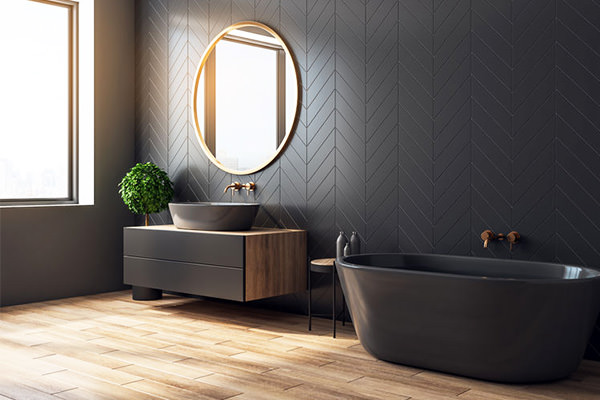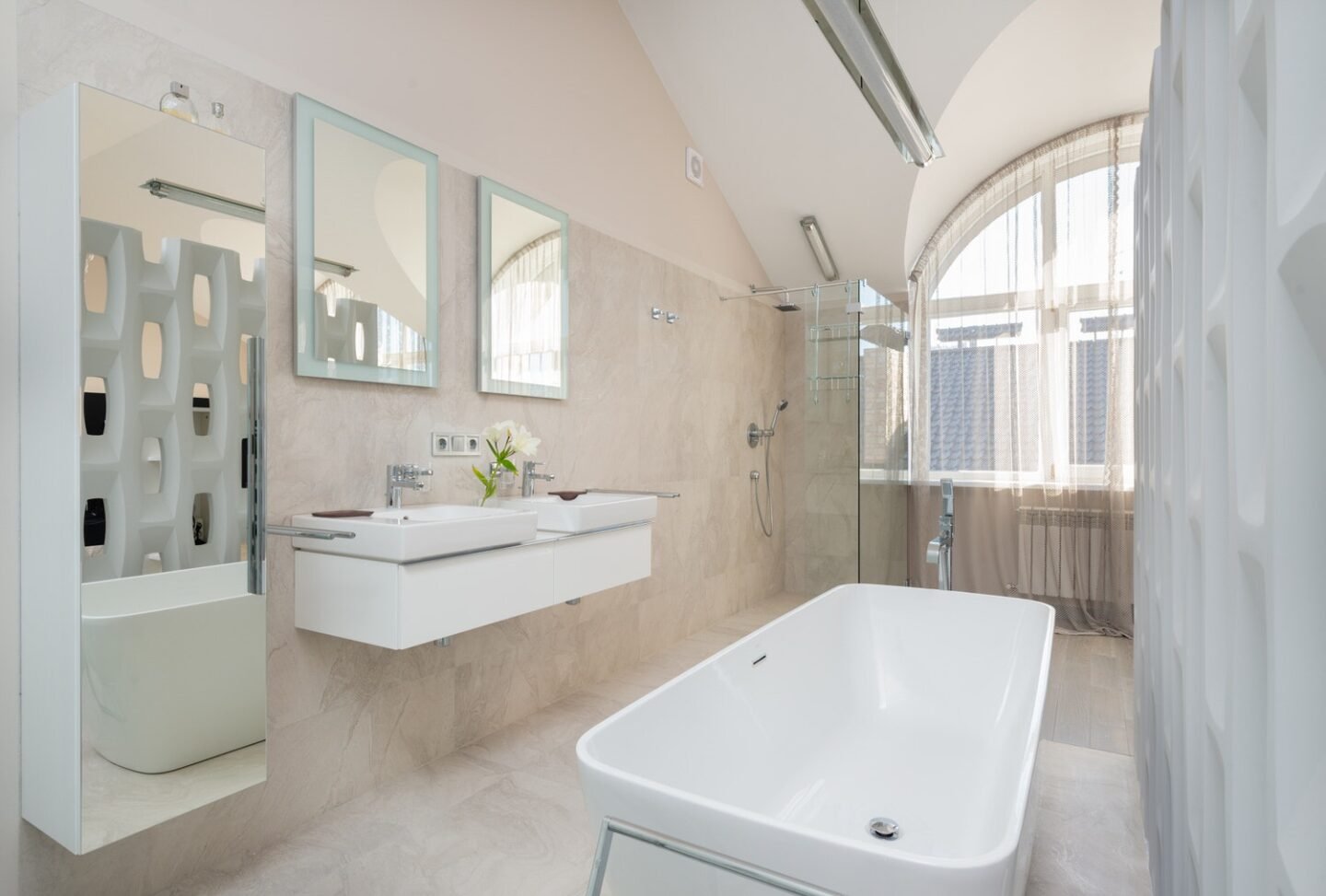Finally modernising your bathroom or adding a new one to your family home?
With additional bathrooms increasing property value by 6% on average, it’s hardly surprising that so many homeowners want another loo! As one of the most personal home improvements, a new bathroom also improves comfort, adds convenience, and streamlines the daily routine.
Below, we’ve outlined four simple steps to getting through a successful bathroom renovation.
-
Write down your plans
It’s important to start by getting organised.
Home renovations projects can be incredibly time consuming even when they’re planned to a tee, so it’s vital to stay focused. Most projects face inevitable delays at some stage, so adding extra components or changing the plan entirely could add months to your scheduled completion date.
Before the work begins, outline your budget and timeline, including some leeway for additional expenses or delays.
-
Choose your favourite styles
Next, it’s time to start planning the creative side to the project!
Gather some ideas together and get inspired by design styles in bathroom showrooms , magazines and online platforms. Plan the layout according to the needs of you and your household, being careful to consider practicality, comfort, and ventilation.
Think about how many people will be using the bathroom: do you need a large, four-piece family suite or a modern, spacious shower room? Lighting plays a crucial role, so you should try to incorporate it naturally and artificially. Think feature wall lights, spotlights, and LED mirrors.

-
Find the right materials and fixtures
While natural materials like tile and stone offer a more luxurious and authentic feel, synthetic options still boast enough durability and practicality for everyday use. Creating a smart style doesn’t need to cost the earth.
A few of the most popular choices for bathroom walls and floors include:
- Tile: Natural and highly customisable, tile can be truly beautiful. If professionally installed, it’s also 100% waterproof. However, too many tiles can overwhelm a space.
- Vinyl wallpaper: Easy to install and remove. More affordable than natural options, but not as durable in very moist conditions.
- Beadboard: Traditional and suitable for rustic-style homes. Protects walls against moisture but won’t work for the whole room and may not suit certain home styles.
- Interior paint: Can be highly resistant against mould and mildew but may cost more than regular interior paint.
Once you’ve decided on the bathroom’s overall feel, you can choose materials for the sink, bathtub and shower. From porcelain and natural stone to stainless steel and copper, you’ll need to choose accordingly.
-
Get started!
With a budgeted plan and realistic timeline in place, you’re ready to go!
If you’ve got some demolition works to get sorted before the best part, make sure you’ve checked if you need planning permission. Don’t forget to rely on the professionals for the most difficult trade tasks: if you expect to disturb gas mains or live electrical connections, choose a trusted Gas Safe engineer.
Choose your tradesperson online, checking reviews and comparing offers before committing to a quote. With the right team, you’ll see your dream bathroom come to life in no time.
